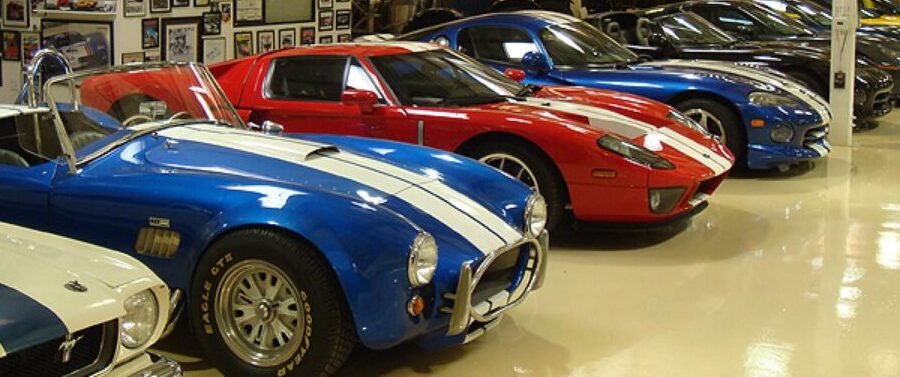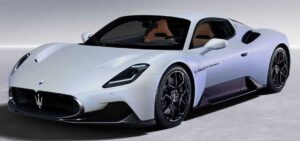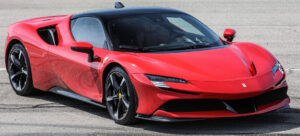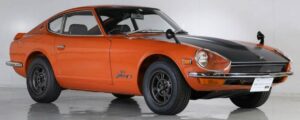Trends in depreciation since summer 2022
1. The state of the supercar market: Trends in depreciation since summer 2022
2. Market context: A roller coaster ride
3. Depreciation trends: A closer look
4. Cars with the highest depreciation rates
5. Conclusion
The state of the supercar market: Trends in depreciation since summer 2022
Since the summer of 2022, the values of sports cars and supercars have been on a decline. However, the rate of depreciation has been decreasing, offering a glimmer of hope for enthusiasts and investors alike. As of now, the market is down by 7% compared to last year, an improvement from the previous 9.8%. It’s important to note that this 7% is an average figure and doesn’t account for the most extreme cases, where some cars have depreciated by as much as 30%.
In this blog post, we’ll delve into the cars that have seen the most significant value drops over the past year, making them less financially wise purchases. But before we get into specifics, let’s first understand the broader market context.
Market context: A roller coaster ride
The COVID-19 pandemic brought about unprecedented economic uncertainty and government interventions, leading to surging demand and plummeting supply in various sectors, including the supercar market. Lockdowns and stimulus checks created a unique environment where investing in cars became more mainstream. Online auction platforms democratized the market, increasing the number of speculators and driving prices up. Some supercars saw value increases of up to 50%, a growth that was clearly unsustainable.
By the first half of 2022, the market reached its peak, and the era of guaranteed profits came to an abrupt end. Inventory levels rose, sales slowed, and the realization that the market could not sustain such rapid growth finally set in.
Depreciation trends: A closer look
From mid-2022 onwards, the market started to correct itself. Interest rates rose, and cars began to depreciate at above-normal rates. On average, sports cars and supercars depreciated by about 9.8% in 2023. However, by the end of 2023 and into 2024, depreciation rates began to normalize, averaging around 7%.
Cars with the highest depreciation rates
Corvette Z06
- Depreciation: 31.9%
- Price Drop: From $229,000 to $156,000
- Analysis: This significant drop is largely due to inflated price premiums. Those who paid the MSRP face no loss, while others who paid the premium experience the full brunt of the depreciation.
Maserati MC20
- Depreciation: 26%
- Price Drop: Approximately $70,000
- Analysis: The MC20’s value has been declining linearly, making it one of the slowest-selling sports cars. High depreciation rates indicate poor market performance.
BMW M4 Competition and CSL
- M4 Competition Depreciation: 14.8%
- CSL Depreciation: 18.1%
- Price Drop: M4 Competition by $12.9k, CSL by $28k
- Analysis: Despite a small slowdown in depreciation rates, these models still face significant value drops.
Ferrari SF90
- Depreciation: 15%
- Price Drop: Approximately $99.5k
- Analysis: Both spiders and coupes of the SF90 have seen steep declines, reflecting the high depreciation common in front-engine GT or sport GT segments.
Jaguar F-Type
- P380 Depreciation: 15.4%
- 4 Cylinder Depreciation: 19.2%
- Price Drop: P380 by $10.9k, 4 Cylinder by $11.2k
- Analysis: Post-facelift models continue to depreciate rapidly, with V8 models also seeing significant declines.
Nissan Z
- Depreciation: 20.6%
- Price Drop: Approximately $12.6k
- Analysis: Prices have come down quickly, mainly due to deflating price premiums. Buyers who paid MSRP face less severe losses.
Aston Martin V8 Vantage
- Depreciation: 11.9%
- Analysis: Depreciation rates are high but are beginning to flatten as these models age, indicating a potential stabilization.
Conclusion
In summary, while the overall market is seeing reduced depreciation rates, certain models continue to lose value rapidly. For prospective buyers and current owners, it’s crucial to be aware of these trends. Avoiding models that depreciate faster than the market average can be a smart financial move. However, it’s also essential to consider the intangible value that owning a dream car can bring.
Inspired by the analysis of our friend @fourwheeltrader. Make sure you check his other videos https://www.youtube.com/@fourwheeltrader/featured.
Are you already a proud owner of a Jaguar F-Type and Nissan Z? If so, check out our selection of parts for this car at the following link:
https://octoclassic.com/product-category/jaguar/f-type
https://octoclassic.com/product-category/nissan/350z
Photos sources: Reddit, uk.motor1.com, Pinterest, 1cars.org, wallpaperaccess.com, Squarespace, Luxurylaunches, Classic Driver














